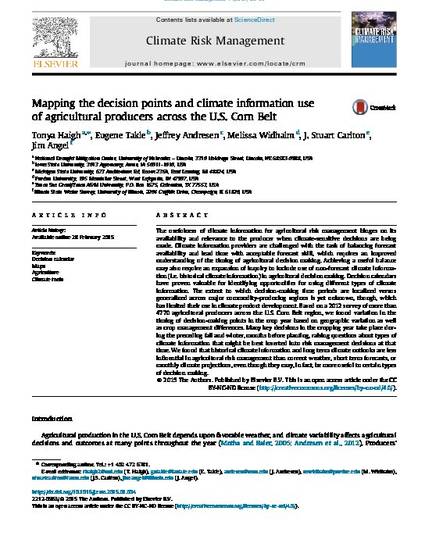
The usefulness of climate information for agricultural risk management hinges on its availability and relevance to the producer when climate-sensitive decisions are being made. Climate information providers are challenged with the task of balancing forecast availability and lead time with acceptable forecast skill, which requires an improved understanding of the timing of agricultural decision making. Achieving a useful balance may also require an expansion of inquiry to include use of non-forecast climate information (i.e. historical climate information) in agricultural decision making. Decision calendars have proven valuable for identifying opportunities for using different types of climate information. The extent to which decision-making time periods are localized versus generalized across major commodity-producing regions is yet unknown, though, which has limited their use in climate product development. Based on a 2012 survey of more than 4770 agricultural producers across the U.S. Corn Belt region, we found variation in the timing of decision-making points in the crop year based on geographic variation as well as crop management differences. Many key decisions in the cropping year take place during the preceding fall and winter, months before planting, raising questions about types of climate information that might be best inserted into risk management decisions at that time. We found that historical climate information and long term climate outlooks are less influential in agricultural risk management than current weather, short term forecasts, or monthly climate projections, even though they may, in fact, be more useful to certain types of decision making.
Available at: http://works.bepress.com/eugene-takle/47/

This article is from Climate Risk Management 7 (2015): 20, doi:10.1016/j.crm.2015.01.004. Posted with permission.